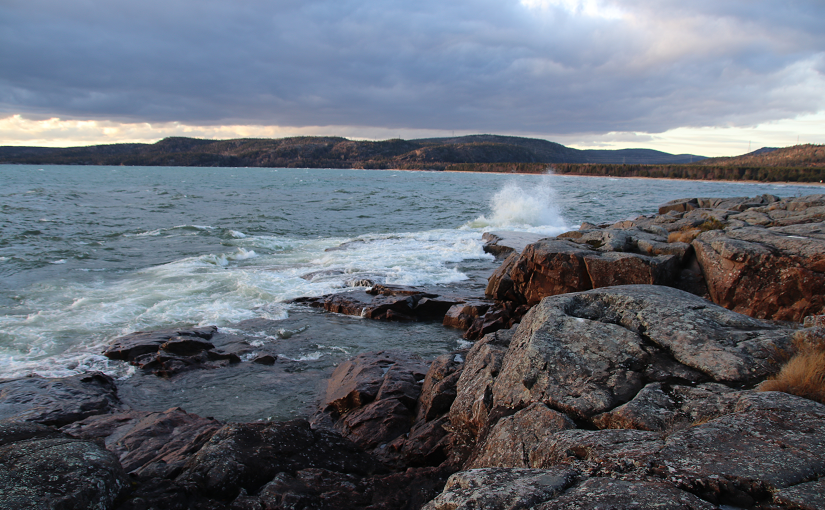Today’s blog comes from Charlotte Westcott, Discovery Leader at Neys Provincial Park.
When you look at a rock, what do you see?
You might notice swirling colours, patterns, scratches, gouges, jagged gaps, and smoothed edges. Every single rock is different.
When I look at rocks, I see a story.
Like people, plants, and animals, rocks have a history—almost a life of their own.
When you start to unravel what rocks are and where they came from, you’re usually taken on a wild ride!

Under all the fluff — like trees, plants, and soil — the Earth is a rock. Rocks make up most natural and manufactured features.
They can be found in building materials, batteries, cosmetics, electrical wiring, pipes, cars, and numerous other products and buildings. They really are the bedrock of our society!
So to start, let’s tackle the most common geology question:
“What kind of rock is this?”
For something so small, a rock is full of so many possibilities.
We could start identifying the rock by examining what it’s made of. We could look at the minerals or chemicals that compose it.

Usually, the first step is to categorize it.
Is it sedimentary, metamorphic, or igneous?
Something wonderful about smaller rocks like the one in the photo is that because they’ve been broken and transported away from their original home, they can often be difficult to identify on the spot.
A habit I’ve picked up is to set aside trying to figure out the exact identity of this rock for the moment. Instead, I focus purely on describing it.
Investigate its colors, textures, patterns, and shapes.
I often love to give rocks a name. Even if it’s not an accurate scientific name, giving things a descriptive name helps their identity stick for you.
Look for things that you find special
Identify features such as sharp edges, peculiar holes, interesting textures, and more. Even with a degree in earth science, I find it helpful to go back to this exercise. Because, to be honest, identifying rocks can be really hard!
This is one of my favourite rocks in the park:
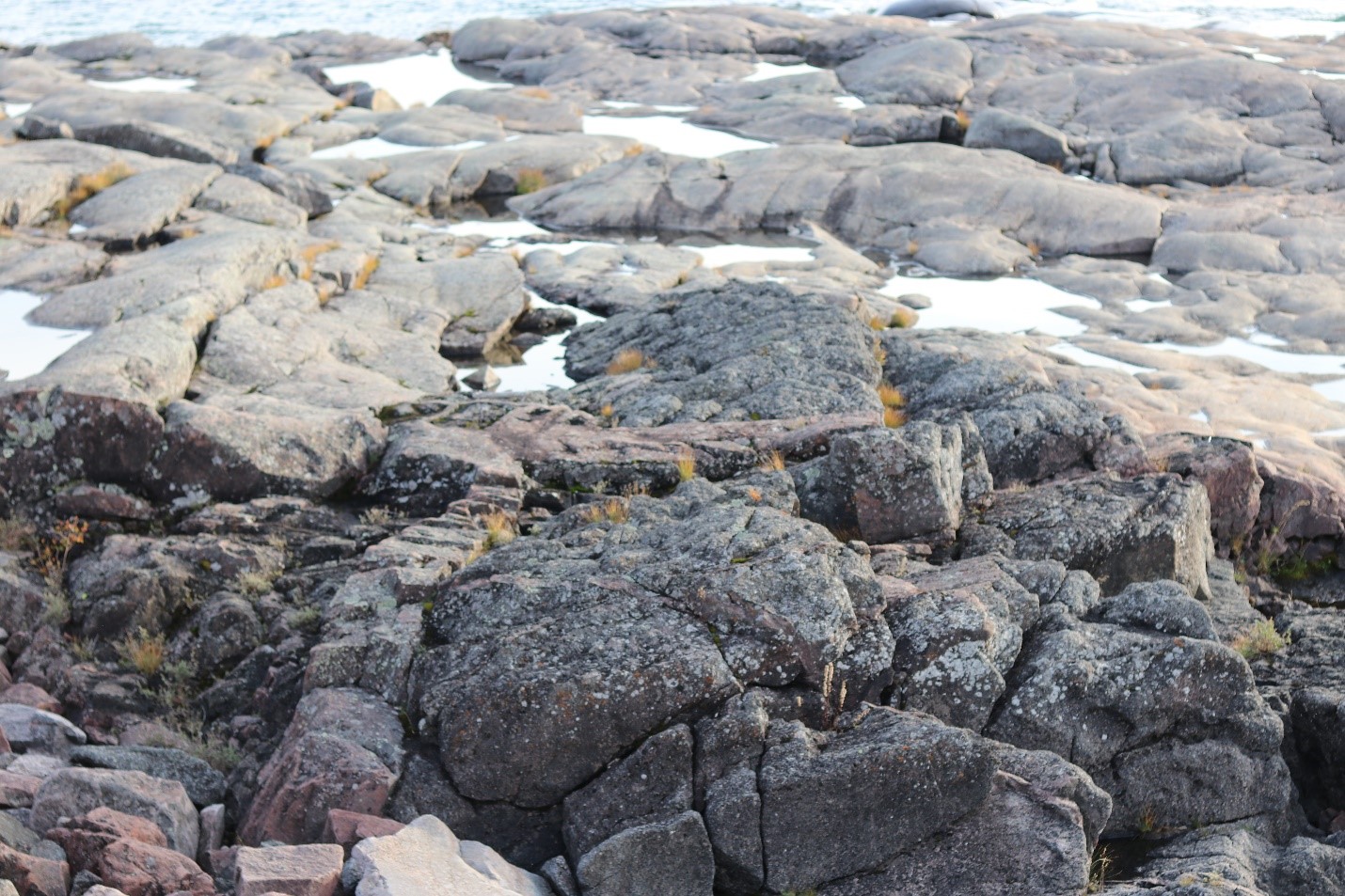
It’s been described to me as “meteor rock,” “the holey rock,” “Craters McGee,” and numerous other names.
These names get at the nature of this rock: black and covered in little holes that have been worn away.
Those holes are from a process called differential erosion; where different parts of a rock will react differently to weathering (a.k.a., aging and environmental factors similar to how people age differently based on life experiences).
Just like people, how rocks age depends on what they are. The holes in this rock are caused by a softer mineral being worn away, while harder minerals stay behind.
This rock isn’t a meteor, but the name “meteor rock” is evocative of its texture! It helps people spot it elsewhere in the area.
Ultimately, aren’t names meant to help identify things?
Sure, calling this rock a biotite gabbro is helpful for identifying it to a geologist.
But if you take anything away from this blog, please know that your descriptions, perspectives, and names have value.
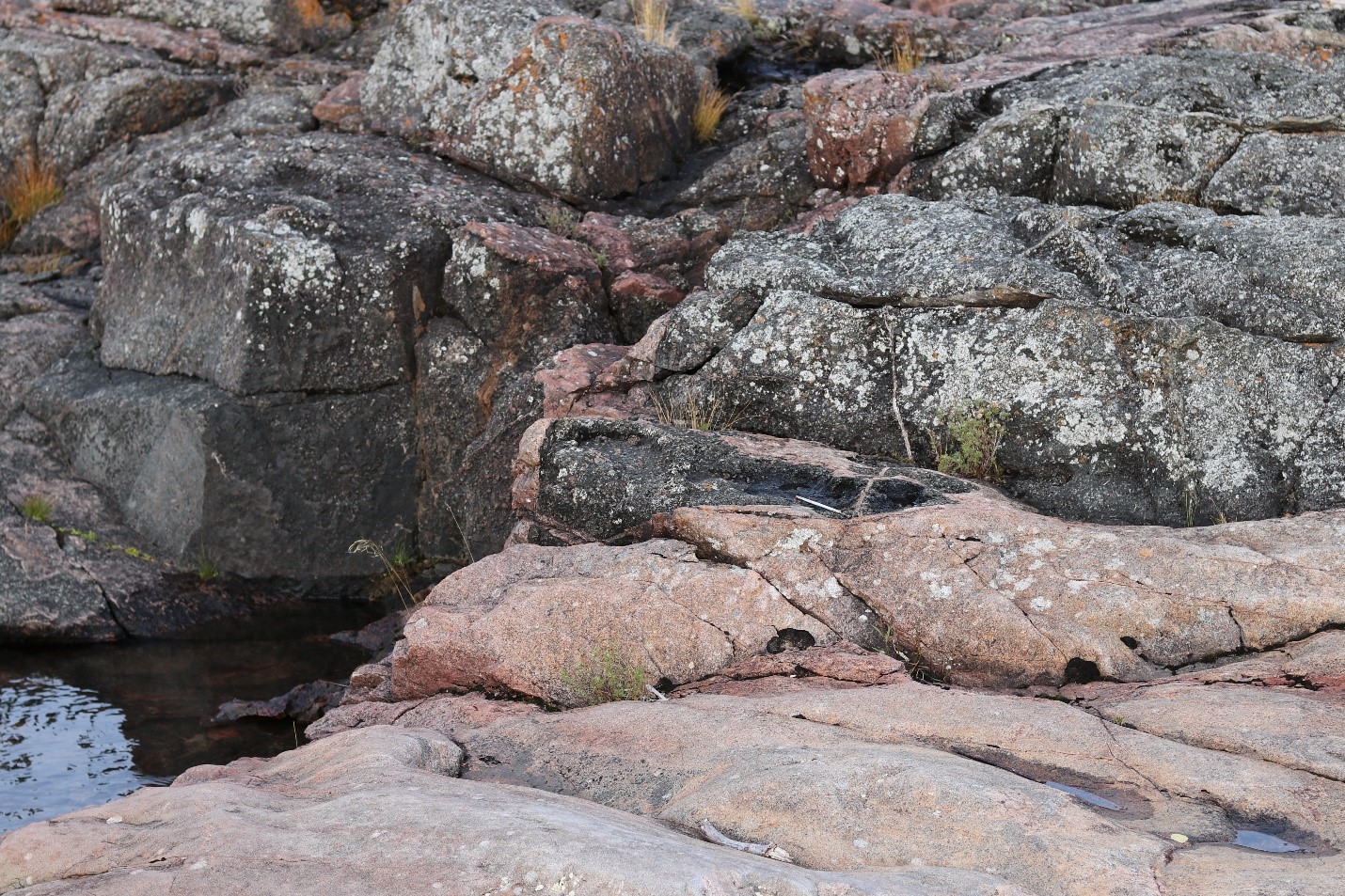
To get at the story of this biotite gabbro, we have to look at its neighbours.
Biotite gabbro is radically different from the smoother, grey-pink rock next to it.
Often confused for granite, this “salmon rock” is called syenite because it lacks a vital granite ingredient: quartz.
These rocks are absolutely ancient!
They’re around 1.2 billion years old.
They’ve been carved and altered by the events that followed their formation, including the creation and failure of a mid-continent rift! Once deep underground, time has worn away the other rocks that used to cover them.
Since being exposed, they’ve been gouged by glaciers and populated by awesome species like lichen!
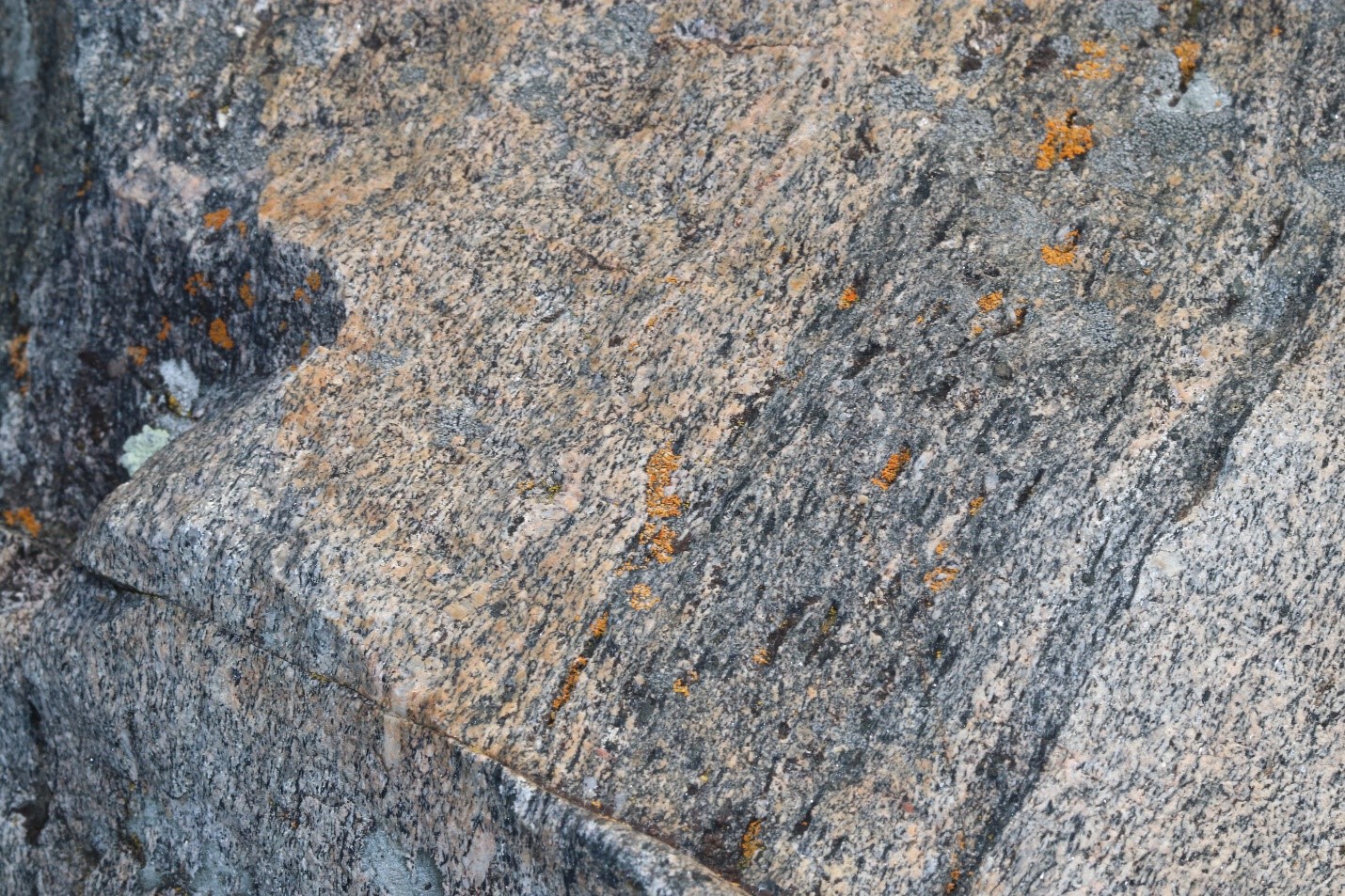
Not only do we have to look at their neighbours and the context in which they exist, but we also try to see past all of the tolls time has taken.
Of course, we could also lean into those stories. Traditionally, when people ask, “What rock is this?”, my instinct is to think petrology—or how the rock was born in the first place.
Rocks tell us stories
The truth about rocks is that they contain numerous stories.
You can focus on their creation, their interactions, their weathering, their exposure, their fractures, and more!
Geology isn’t something that happened 1.2 billion years ago to result in these rocks – it’s something that is happening all around us all of the time (albeit very slowly)!
If we were looking to figure out what exactly happened here 1.2 billion years ago when these rocks were formed, we have two pieces of a puzzle. There are two rocks here, radically different from each other in colour and texture, that just don’t mix.
Can you see them?
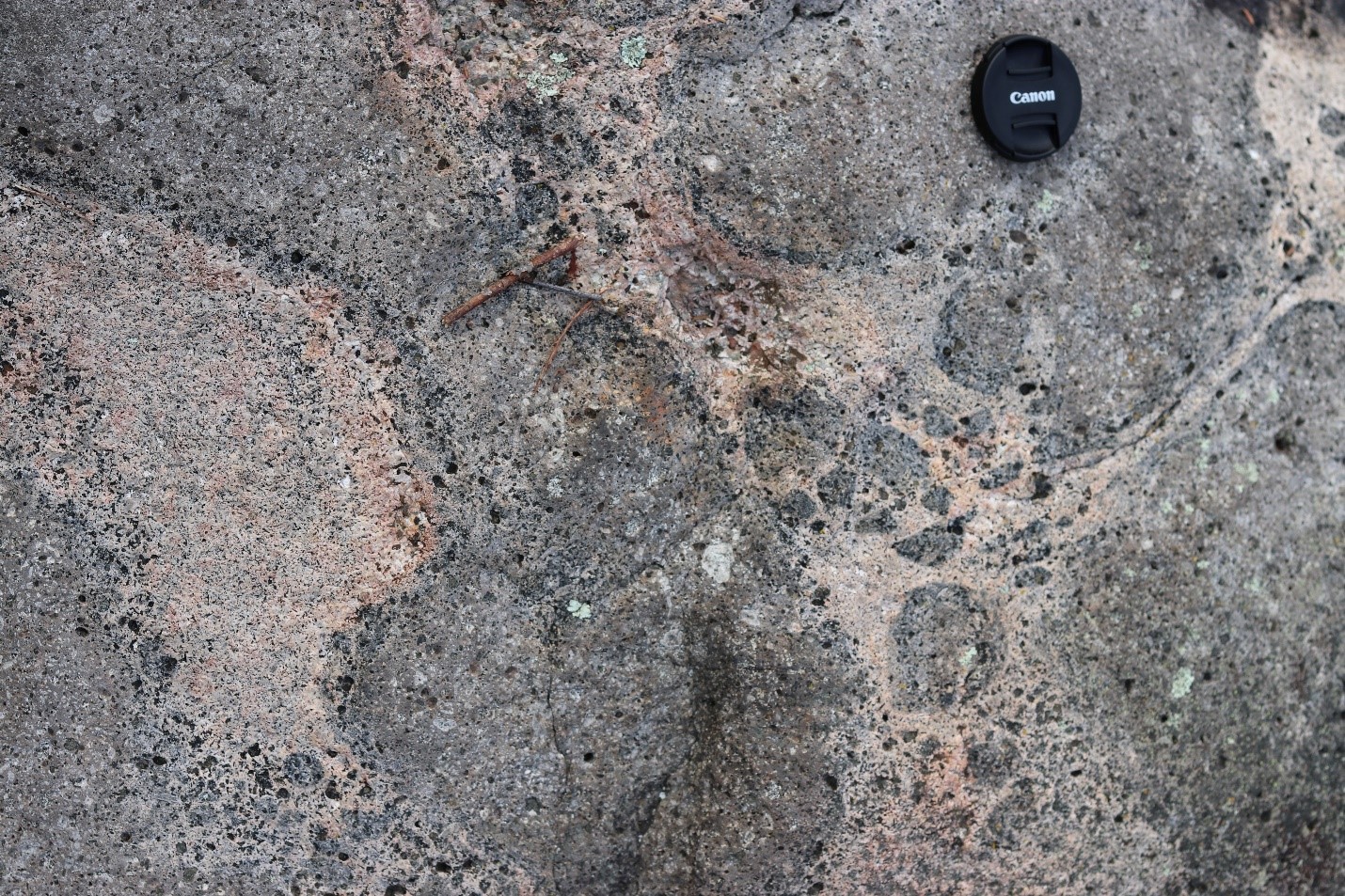
The third piece of the puzzle we can gather is along the border.
We look at how these two dominant types of rock interact. Do they have a solid border? Is there a point where we can identify mixing?
Here’s where you can also engage in a time-honored tradition for rock appreciators: you can cheat.
Check out the Ontario Geological Survey maps for the area, see what papers have been published, and even look at a Park Management Plan (when you’re identifying rocks in a provincial park, that is)!
Checking the cheat sheets for Neys will tell you that this rocky shoreline was created deep underneath a giant volcano.
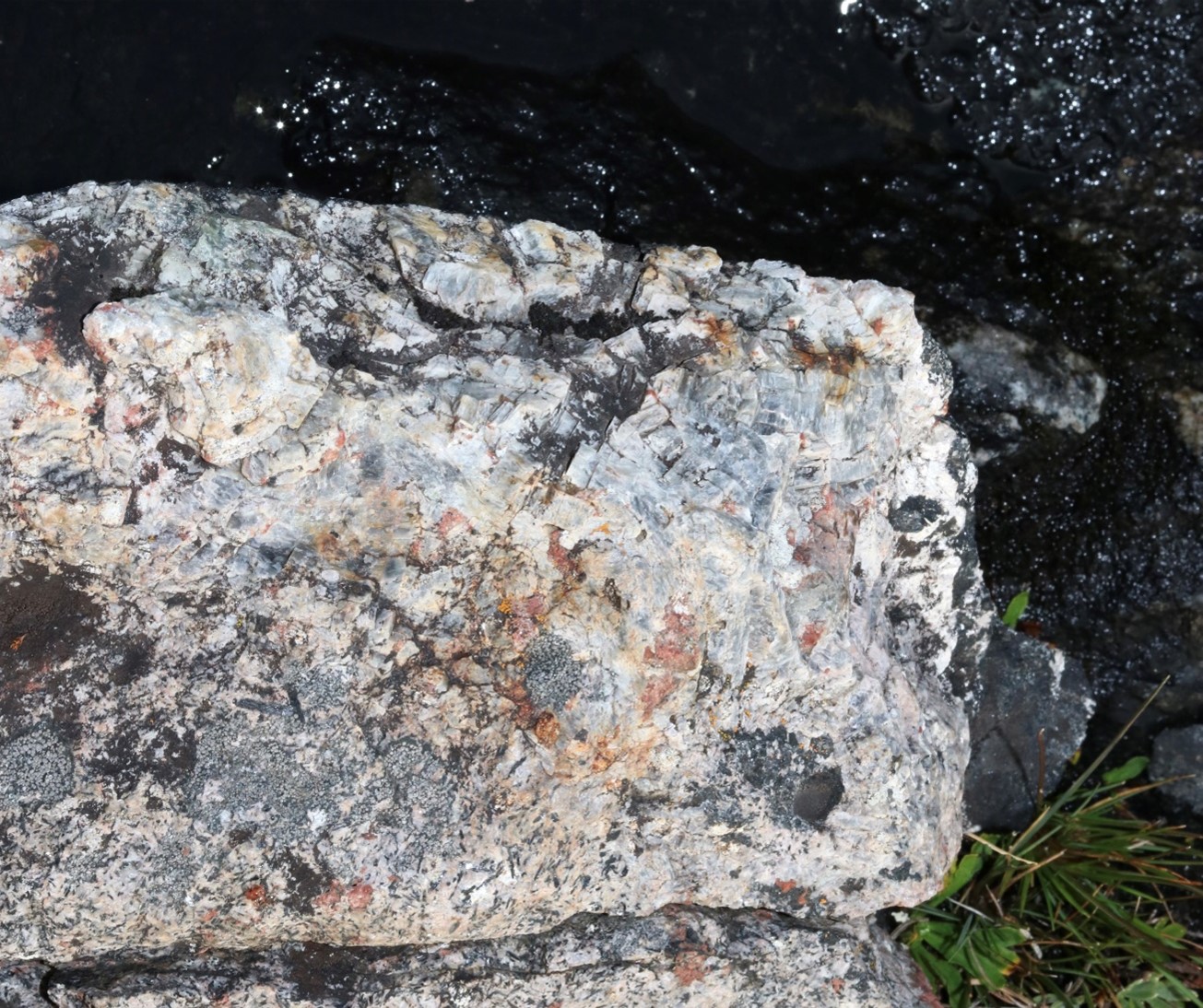
Neys is part of the Coldwell Alkaline Complex. These rocks were once part of a magma chamber for a ginormous shield volcano. Shield volcanoes are a bit different from your typical volcano – they have runnier, less gassy, and less sticky magma that spreads out and creates a large volcano with gentle slopes.
Looking at these rocks today, we can see the stories of how that volcano was scraped away by time and glaciers. We can see how life has found and settled on top of it.
We can also look at that big question: “What kind of rock is this?”
Delving into the petrology of these rocks, we can now think of them as a snapshot: a frozen moment from inside a magma chamber.
By exploring this frozen snapshot, we can also see something else: though magma can seem like it would just be magma, sometimes two different types of magma are so different from each other that they just don’t mix.
Ultimately, reading ancient rocks is hard
There are so many different angles to explore and numerous different stories out there to read.
This blog has covered many first steps for identifying rocks, but the most important step is to just start looking.
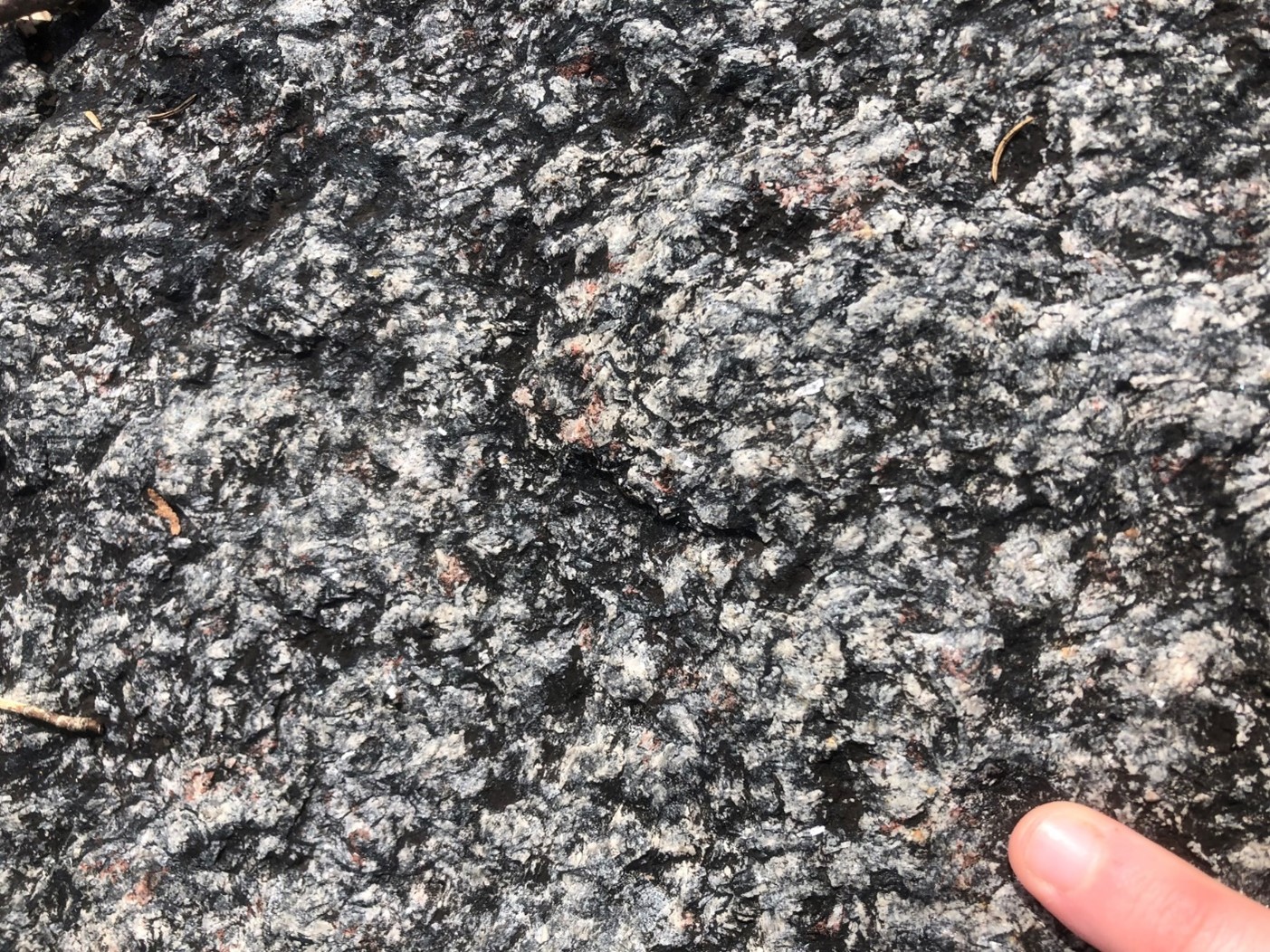
The photos featured in this blog were taken on the Under the Volcano Trail at Neys Provincial Park. The park features numerous outcrops and fabulous rocks to explore on this trail next time you visit.
Pst! Remember to leave rocks where you find them so others can enjoy discovering them! Removing any natural object from a provincial park is prohibited.
Neys Provincial Park is located 3 ¼ hours from Thunder Bay and 30 minutes from Marathon.
